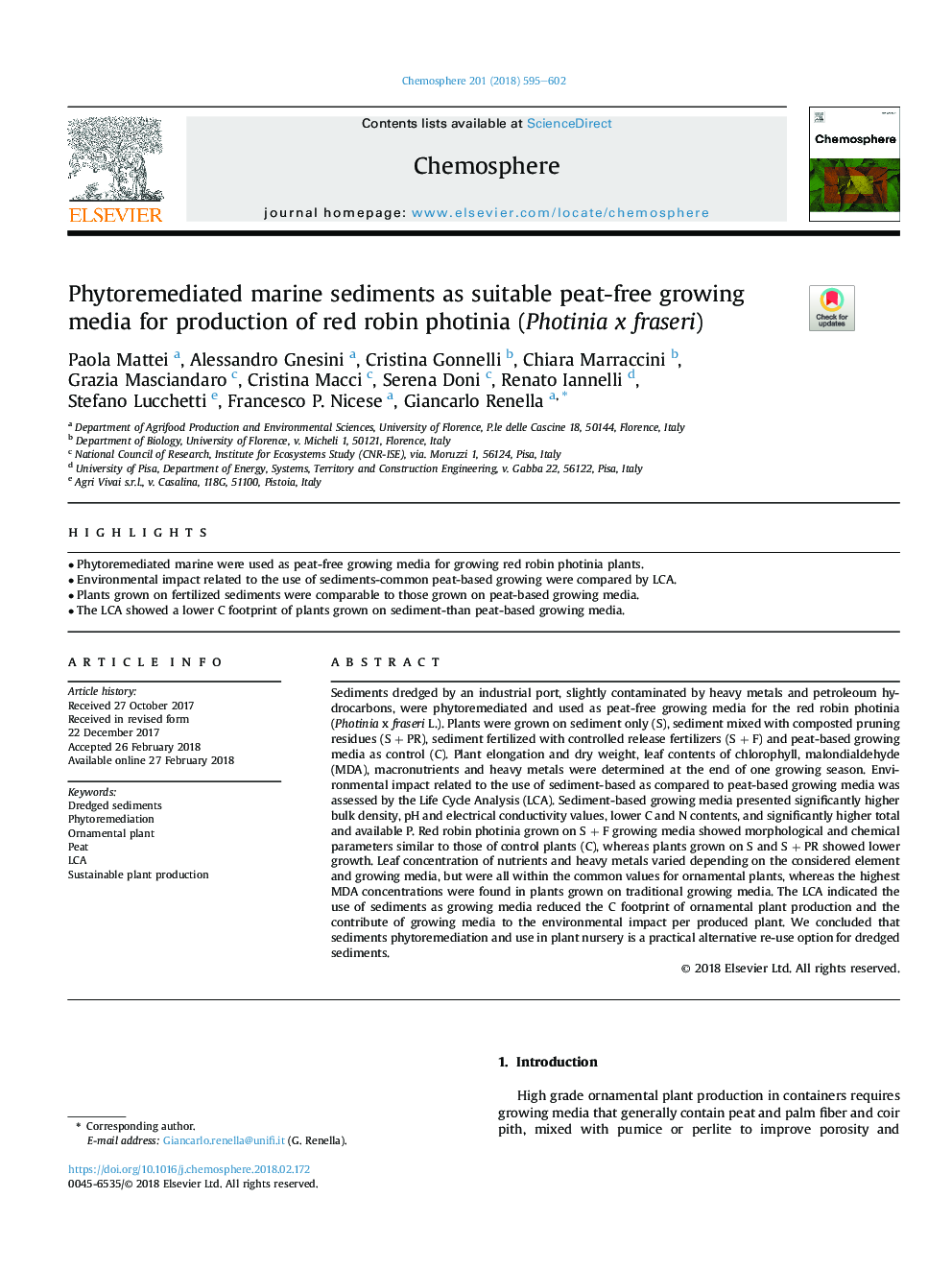| Article ID | Journal | Published Year | Pages | File Type |
|---|---|---|---|---|
| 8851673 | Chemosphere | 2018 | 8 Pages |
Abstract
Sediments dredged by an industrial port, slightly contaminated by heavy metals and petroleoum hydrocarbons, were phytoremediated and used as peat-free growing media for the red robin photinia (Photinia x fraseri L.). Plants were grown on sediment only (S), sediment mixed with composted pruning residues (SÂ +Â PR), sediment fertilized with controlled release fertilizers (SÂ +Â F) and peat-based growing media as control (C). Plant elongation and dry weight, leaf contents of chlorophyll, malondialdehyde (MDA), macronutrients and heavy metals were determined at the end of one growing season. Environmental impact related to the use of sediment-based as compared to peat-based growing media was assessed by the Life Cycle Analysis (LCA). Sediment-based growing media presented significantly higher bulk density, pH and electrical conductivity values, lower C and N contents, and significantly higher total and available P. Red robin photinia grown on SÂ +Â F growing media showed morphological and chemical parameters similar to those of control plants (C), whereas plants grown on S and SÂ +Â PR showed lower growth. Leaf concentration of nutrients and heavy metals varied depending on the considered element and growing media, but were all within the common values for ornamental plants, whereas the highest MDA concentrations were found in plants grown on traditional growing media. The LCA indicated the use of sediments as growing media reduced the C footprint of ornamental plant production and the contribute of growing media to the environmental impact per produced plant. We concluded that sediments phytoremediation and use in plant nursery is a practical alternative re-use option for dredged sediments.
Related Topics
Life Sciences
Environmental Science
Environmental Chemistry
Authors
Paola Mattei, Alessandro Gnesini, Cristina Gonnelli, Chiara Marraccini, Grazia Masciandaro, Cristina Macci, Serena Doni, Renato Iannelli, Stefano Lucchetti, Francesco P. Nicese, Giancarlo Renella,
